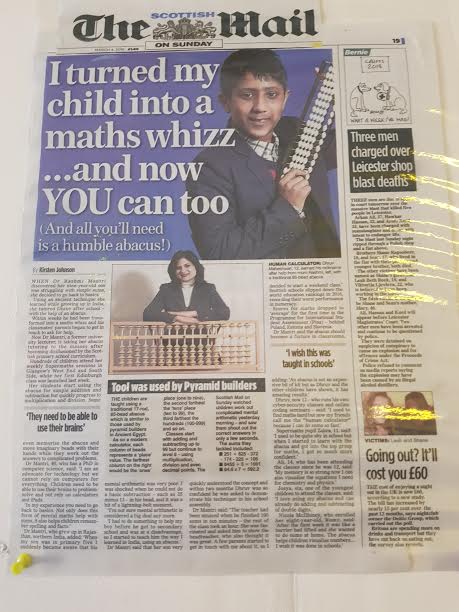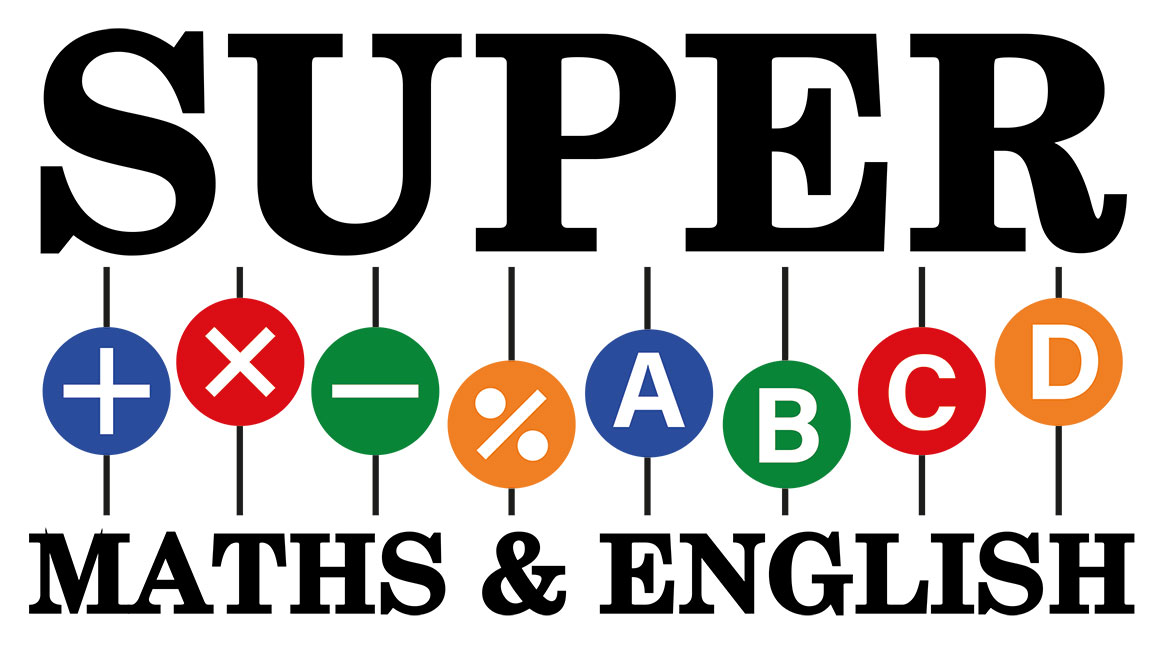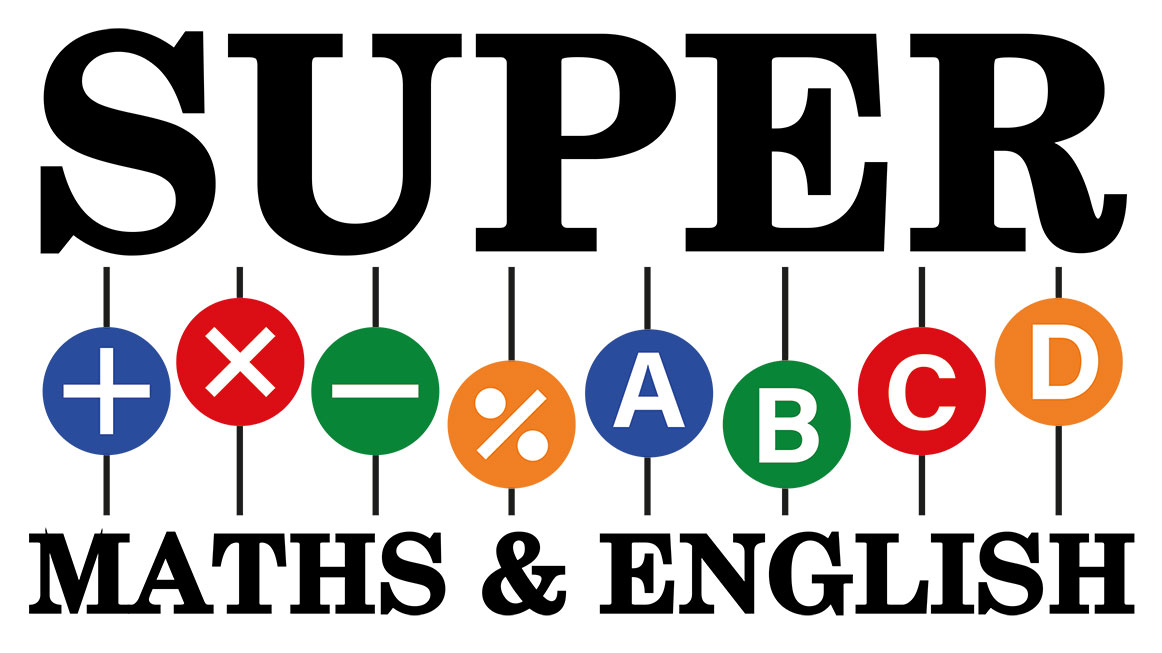
The following is from an article titled “I turned my child into a math whizz and now you can too” published in the Scottish Mail on Sunday by Kirsten Johnson.
WHEN Dr Rashmi Mantri discovered her nine-year-old son was struggling with simple sums, she decided to go back to basics.
Using an ancient technique she learned while growing up in India, she tutored Dhruv after school – with the help of an abacus.
Within weeks he had been transformed into a maths whizz and his classmates’ parents began to get in touch to ask for help.
Now Dr Mantri, a former university lecturer, is taking her abacus tutoring to the masses after becoming disillusioned by the Scottish primary school curriculum. Hundreds of children attend her weekly Supermaths sessions in UK, while her first class was launched last week.
Her students start using the Online abacus maths for simple addition and subtraction but quickly progress to multiplication and division. Some even memorise the abacus and move imaginary beads with their hands while they work out the answers to complicated problems.
Dr Mantri, 40, who has a PhD in computer science, said: ‘I am an advocate for technology but we cannot rely on computers for everything. Children need to be able to use their brains to problem solve and not rely on calculators and iPads.
‘In my experience you need to go back to basics. Not only does this form of mental maths help with sums, it also helps children remember spelling and facts.’ Dr Mantri, who grew up in Rajasthan, northern India, added: ‘When my son was in primary five I suddenly became aware that his mental arithmetic was very poor. I was shocked when he could not do a basic subtraction – such as 35 minus 13 – in his head, and it was a bit of a lightning-bolt moment.
‘I’m not sure mental arithmetic is considered a big deal any more.
‘I had to do something to help my boy before he got to secondary school and was at a disadvantage, so I started to teach him the way I learned in India, using an abacus.’ Dr Mantri said that her son very quickly understood the concept and within two months Dhruv was so confident he was asked to demonstrate his technique in his school assembly.
Dr Mantri said: ‘The teacher had been amazed when he finished 100 sums in ten minutes – the rest of the class took an hour. She was fascinated and asked him to show the headteacher, who also thought it was great. A few parents started to get in touch with me about it, so I decided to start a weekend class.’ Scottish schools slipped down the world education rankings in 2016, recording their worst performance in numeracy.
Scores for maths dropped to ‘average’ for the first time in the Programme for International Student Assessment (Pisa) – behind Poland, Estonia and Slovenia.
Dr Mantri said the abacus should become a fixture in classrooms, adding: ‘An abacus is not an expensive bit of kit but as Dhruv and the other children have shown, it has amazing results.’ Dhruv, now 12 – who runs his own cyber-security classes and online coding seminars – said: ‘I used to find maths hard but now my friends call me the “human calculator” because I can do sums so fast.’ Supermaths pupil Zahra, 11, said: ‘I used to be quite shy in school but when I started to learn with the abacus and got into the top group for maths, I got so much more confident.’ Ali, 14, who has been attending the classes since he was 12, said: ‘My memory is so strong now I can also visualise the equations I need for chemistry and physics.’ Josya, six, one of the youngest children to attend the classes, said: ‘I love using my abacus and can already do adding and subtracting of double digits.’ Nicola McIlhiney, who enrolled her eight-year-old, Romy, said: ‘After the first week it was like a barrier had lifted and she wanted to do sums at home. The abacus helps children visualise numbers… I wish it was done in schools.’ Tool was used by Pyramid builders THE children are taught using a traditional 17-rod, 85-bead abacus which is similar to those used by pyramid builders in Ancient Egypt.
As on a modern calculator, each column of beads represents a ‘place’ value. The farthest column on the right would be the ‘ones’ place (one to nine), the second farthest the ‘tens’ place (ten to 99), the third farthest the hundreds (100-999) and so on.
Classes start with adding and subtracting up to 99 but continue to level 8 – using multiplication, division and even decimal points. The Scottish Mail on Sunday watched children work out complicated online abacus maths yesterday morning – and saw them shout out the correct answers in only a few seconds.
The sums they tackled included:
251 + 625 – 372 – 174 – 225 = 105
8455 ÷ 5 = 1691
84.6 x 7 = 592.2
‘They need to be able to use their brains” I wish this was taught in schools’



